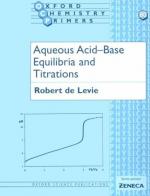|
This section contains 1,109 words (approx. 4 pages at 300 words per page) |

|
Titration Practicals - Volumetric Analysis
Summary: Details an experiment based on volumetric analysis, which is a quantitative technique to determine the concentration of a solution through a series of chemical reactions, including neutralisation of an acid or base. Aims to create a solution of standardized hydrochloric acid with an accurate concentration, which then can be used to titrate and analyse samples of `cloudy' ammonia.
Titration Practicals- Volumetric Analysis
Aim: To create a solution of standardized hydrochloric acid with an accurate concentration, which then can be used to titrate and analyse samples of `cloudy' ammonia.
Introduction:
This experiment is based on volumetric analysis, which is a quantitative technique to determine the concentration of a solution through a series of chemical reactions, including neutralisation of an acid or base. Titration is the process used to neutralise a substance, in order to find the end point and the equivalence point of the desired substance.
Materials:
- Burette with stand, a pipette with filler, a small funnel
- A spatula, and a 1.325 gram sample of anhydrous sodium carbonate
- An electronic balance
- Wash bottle with distilled water
- Conical flask(s)
- 250 mL standard flask
- Methyl orange indicator
- 10 mL sample of `cloudy' ammonia
- 10 mL pipette, 20 mL pipette
- Volumetric flask
(Part 1)
- The hydrochloric acid was to be reacted against a primary...
|
This section contains 1,109 words (approx. 4 pages at 300 words per page) |

|


